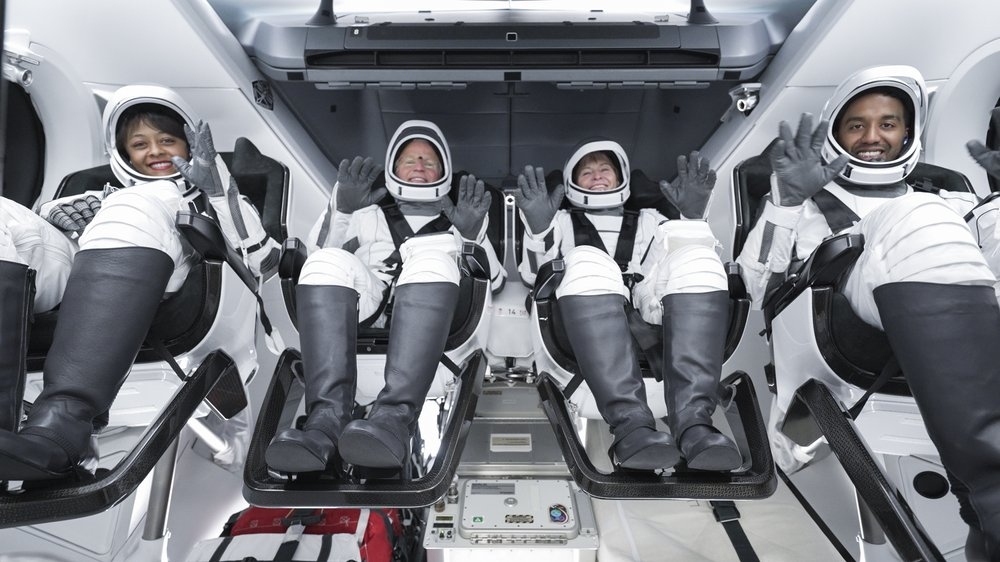The Axiom Mission 4 (Ax-4) is set to carry out significant scientific research during its journey to the International Space Station (ISS). This landmark private spaceflight will launch on Wednesday from NASA’s Kennedy Space Center in Florida.
NASA and the Indian Space Research Organisation (ISRO) are collaborating on the mission, which will include several scientific investigations.
Key research areas include studies on muscle regeneration, the growth of sprouts and edible microalgae, the survival of tiny aquatic organisms, and human interaction with electronic displays in microgravity.
The mission’s research portfolio comprises approximately 60 scientific studies and activities, representing 31 countries, including the United States, India, Poland, Hungary, Saudi Arabia, Brazil, Nigeria, the United Arab Emirates, and various European nations.
This will mark the most research-intensive Axiom Space mission conducted aboard the International Space Station to date.
ISRO’s experiments include the following:
Crop Seeds on ISS
This ISRO experiment will investigate the impacts of spaceflight on six varieties of crop seeds. After the mission, seeds will be grown for multiple generations and plants showing preferred traits selected for genetic analyses. This project aims to help understand how crops may be grown in space for future exploration missions.
Cyanobacteria on ISS
Cyanobacteria are aquatic bacteria that can photosynthesize, and are of interest for integration into spacecraft environmental control systems. This ISRO experiment will compare two strains of cyanobacteria to investigate growth rates, cellular responses, and biochemical activity in microgravity. The results could help with the development of future spacecraft life support systems.
Sprouts
This ISRO experiment will investigate the impacts of spaceflight on germination and growth of crop seeds. After the mission, seeds will be grown for multiple generations and the effects on genetics, microbial load, and nutritional profile investigated. This project aims to help understand how crops may be grown in space for future exploration missions.
Space Microalgae
Microalgae are potentially useful organisms for future spaceflight that could be used as foods, fuel, or even used in life support systems. In this experiment, three strains of microalgae will be grown and the impact of microgravity on the growth, metabolism, and genetic activity will be investigated versus algae grown on the ground.
Myogenesis
This project aims to identify the pathways responsible for skeletal muscle dysfunction in microgravity and explore therapeutic targeting strategies. By studying how muscle loss occurs in space, the project seeks to pinpoint specific molecular mechanisms and potential interventions. Understanding these pathways is crucial for developing treatments to prevent muscle atrophy in astronauts during long space missions. On Earth, the findings could also impact the understanding of and treatments for muscle-related diseases and conditions related to aging or prolonged immobility.
Voyager Displays
This experiment will investigate how the physical and cognitive impact of utilizing computer screens in microgravity. The research will study how pointing tasks, gaze fixation, and rapid eye movements are affected my being performed in space, and how this may interact with subjective experiences of stress wellbeing. The results could inform future spacecraft computer design and interaction.
STEMonstrations
These will consist of four different STEAM outreach activities for Indian students. STEAM stands for Science and Technology, which is interpreted through Engineering and Arts and is based on mathematics.
Voyager Tardigrades
This ISRO project will investigate the revival, survival, and reproduction of tardigrades sent to the ISS. The project will examine the revival of dormant tardigrades, count the number of eggs laid and hatched during a mission, and compare the gene expression patterns of space flown vs. ground control populations. The research seeks to identify molecular mechanisms of resilience which has implications for understanding the limits of life in extreme environments. This knowledge could inform future space exploration and help develop biotechnology applications on Earth.
The Axiom-4 mission also sets the tone for ISRO’s own Gaganyaan Mission, a project to send a 3-day manned mission to the Low Earth Orbit (LEO) of 400 km with a crew of three members and bring them safely back to Earth.
(With inputs from ANI)














